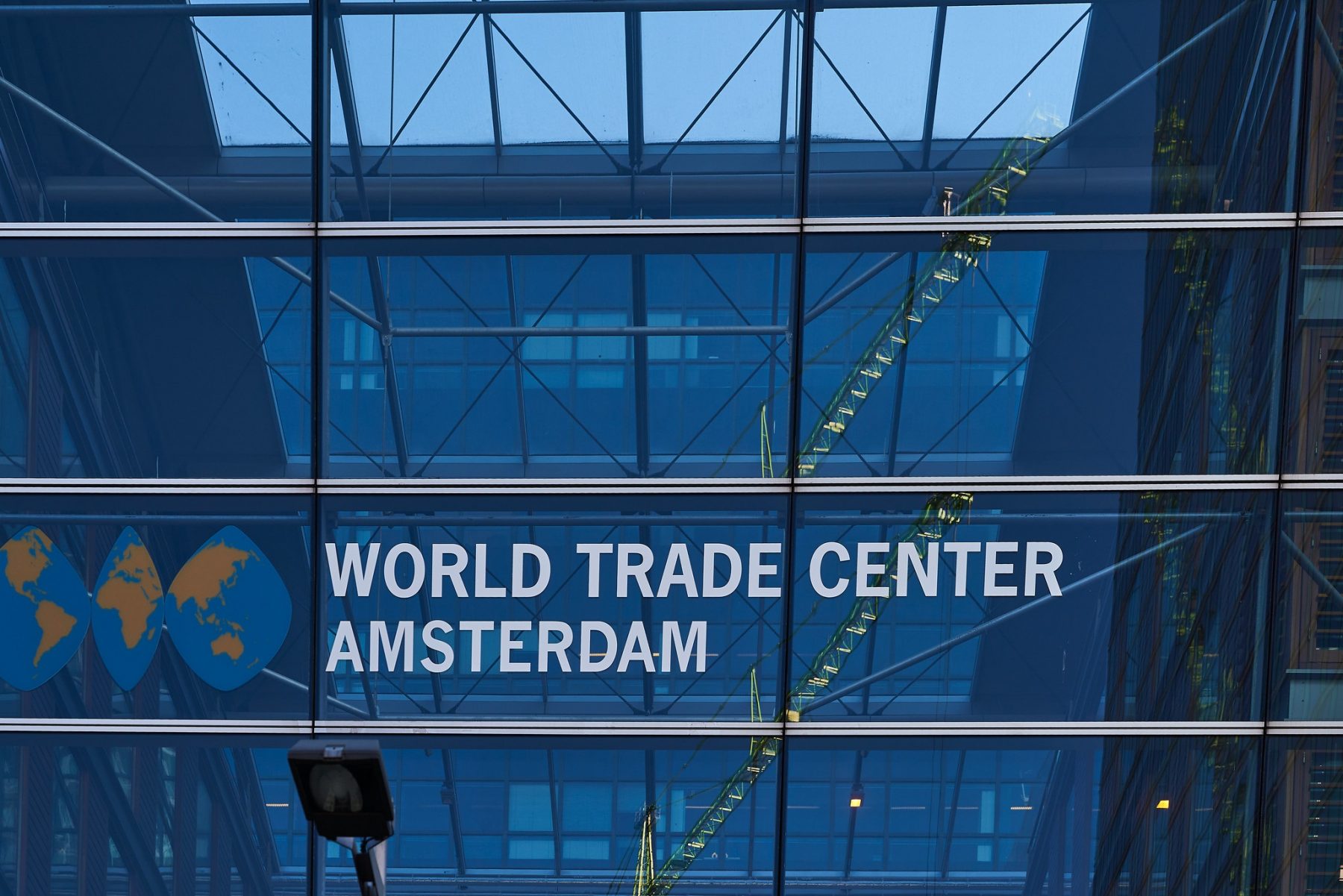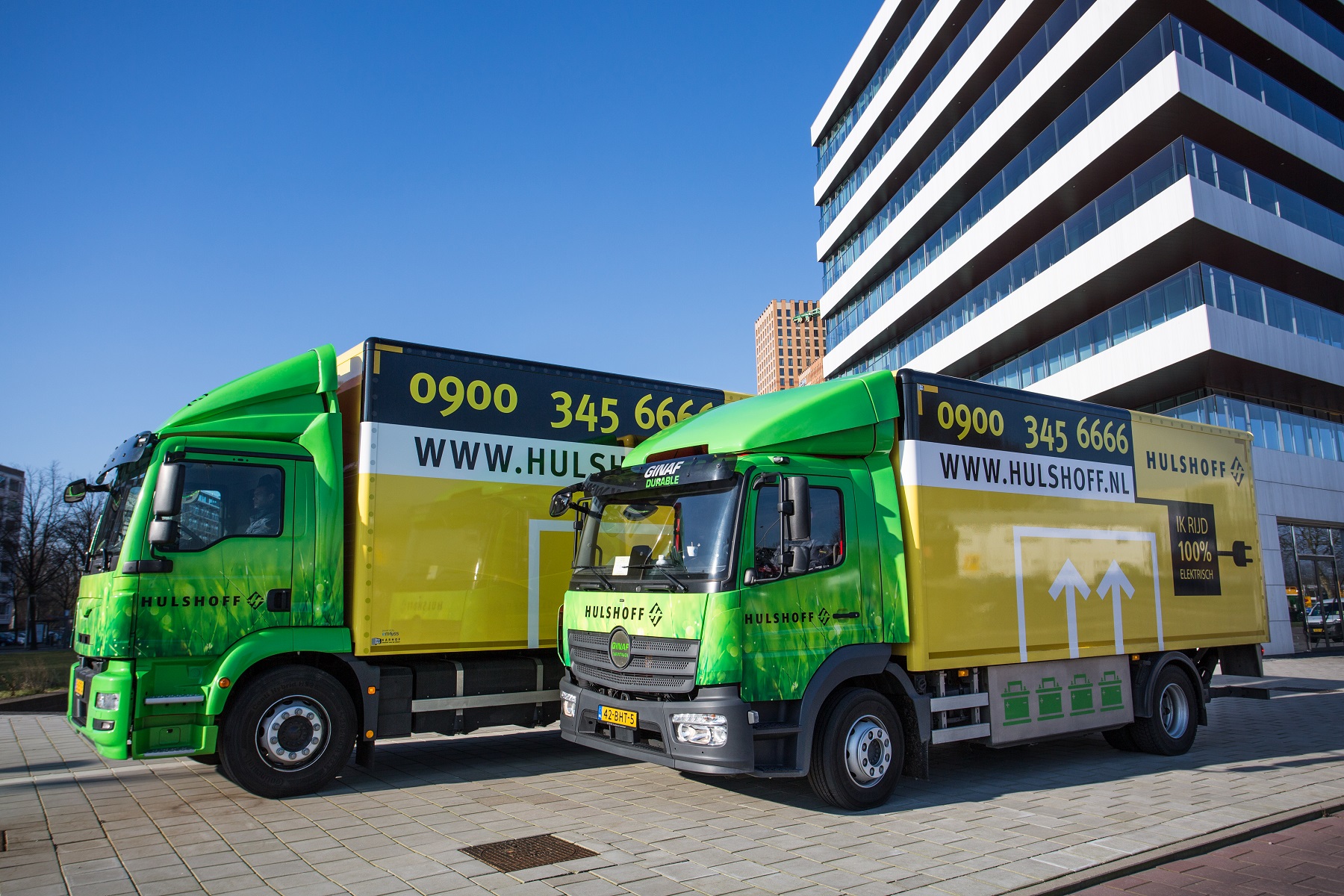Last year, the idea was innovative: removals company Hulshoff built a large logistics base along the A5, complete with 3,100 solar panels on the roof to charge a whole series of electric vehicles. The plan was to put part of Hulshoff’s fleet of vehicles to work as a smarter way of supplying Zuidas. Rather than having hundreds of suppliers separately doing the last mile through this busy city district, they could drop off their deliveries at the Hulshoff base. Then, at fixed times, Hulshoff, would use their electric vehicles to deliver bundles of items right to the door of companies who subscribed to the scheme.
Twenty times a day
Reduced traffic, fewer traffic jams, less danger, noise and exhaust fumes are obviously an advantage for everyone. Companies that subscribed also enjoy other benefits from the service. ‘There’s now no longer any need for someone to go to the door ten or twenty times a day to receive a package from an unknown person’, says Ger Hulshoff, who set up the experimental arm of the company with his son Gerry. ‘When you use our services, you always get the same delivery person at the door, complete with VOG (Certificate of Good Conduct).’
Coffee and paper
To publicise the experiment, there were large roadside billboards, Hulshoff became an active member of the Green Business Club, and it also funded the pilot. Ultimately, 11 companies subscribed as customers. Together, they selected 35 suppliers to take part. It mainly involved items that are always in the building and do not need to be chilled, such as paper and coffee. Fresh food and drink and packages for employees were not included yet.

Cold feet
Eleven customers is far from all of the participants in the Green Business Club. ‘They got cold feet’, explains Nina van den Berg, project manager at the club. ‘Companies are scared of outsourcing something like that and adding an extra link to their supply chain. ‘Will everything arrive on time? Won’t it get lost?’ Because using the hub adds in a short delay, some processes need to be restructured. ‘For example, you need to order new coffee two days in advance rather than one.”
Disappointed
For the first six months, Hulshoff offered free use of the hub. After that, customers had to pay – a few hundred euros per month, depending on the number of deliveries per week. Much to Hulshoff’s disappointment, most of the customers gave up on it at that point. The outbreak of coronavirus followed soon after. ‘If there’s nobody in the building, nothing needs to be delivered’, says Hulshoff, summing up the situation. Even before corona, he felt it was ‘very slow to grow’. This is something he finds strange, because prior to the pilot, everyone in the club was willing to sign the so-called Green Deal ZES, aiming to achieve Zero Emission City Logistics by 2025.

Who pays?
‘The participants still support the ambition’, says Van den Berg, ‘but there needs to be a better business case first.’ In her view, many customers were actually highly satisfied, but the move towards a subscription proved too much. The advantages for a single office are also far from always clear, for example. In multi-tenanted buildings, offices are often located somewhere upstairs in a tower. That means receiving deliveries is not their problem, but that of the building manager, downstairs at the rear entrance. With that in mind, the WTC itself became a Hulshoff customer, with 300 tenants. Van den Berg: ‘They really have a problem, with all the trucks having to get through a narrow street.’ But even in situations like that, it’s always a question of who pays the bill. After all, offices and the building manager benefit from the hub, but so do the suppliers, who no longer need to drive into the busy area.
Tower subscriptions
Later this year, three fourth-year business studies students from Amsterdam University of Applied Sciences will be setting to work at Green Business Club Zuidas. With input collected from all stakeholders on what the hub is worth to them, the students will work on possible business cases. Could there be tower subscriptions, for example? And how many tenants, what kind of size, do you need to make it work? Van den Berg can see all kinds of secondary advantages in a hub. ‘You automatically gain a better overview of how many deliveries are actually arriving on which days and it’s also easier to see if different tenants in the building would be better advised ordering paper from the same company.’
Return logistics
Van den Berg is also thinking hard about return logistics. ‘If Hulshoff delivers full pallets, the empty ones can be returned straight away, filled with empty cardboard and plastic packaging. Nevertheless, Van den Berg feels that hubs can only be a part of the solution for the problem of distribution. She still sees plenty of unnecessary journeys with items that are not needed. ‘Just stop transporting tap water and start ordering flowers from the local florist.’ There are now other hubs also active in Amsterdam, such as Deudekom’s Simplymile and the City Hub. Van den Berg: ‘It’s good for the market. Things are really moving.’ She’s happy that Hulshoff is carrying on with at least two participants and expects to see many further developments around this kind of hub.

Give your opinion